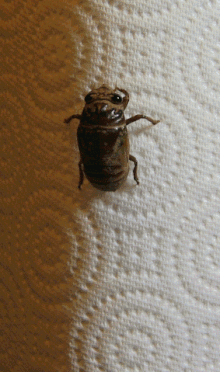This is an old revision of this page, as edited by 199.0.201.100 (talk) at 13:29, 18 April 2013. The present address (URL) is a permanent link to this revision, which may differ significantly from the current revision.
Revision as of 13:29, 18 April 2013 by 199.0.201.100 (talk)(diff) ← Previous revision | Latest revision (diff) | Newer revision → (diff)
Arthropods are covered with a tough or resistant exoskeleton, which may be mineralised or constructed of a tough polymer such as chitin, and is often biomineralized with materials such as calcium carbonate. This external skeleton is moulted as the organism grows.
Microscopic structure

A typical arthropod exoskeleton is a multi-layered structure with four functional regions: epicuticle, procuticle, epidermis and basement membrane.Cite error: A <ref> tag is missing the closing </ref> (see the help page). When it fails, it does so by cracking. The inner layer is not sclerosed, and is thus much softer; it is able to resist tensile forces but is liable to failure under compression.
This combination is especially effective in resisting predation, as predators tend to exert compression on the outer layer, and tension on the inner.
The degree of scleritisation affects how the cuticle responds to deformation. Below a certain point - and this point will be higher the more scleritised the cuticle is - deformation is elastic and the original shape is returned to after the stress is removed. Above this point, plastic (non-reversible) deformation occurs until finally the cuticle cracks.
Segmentation
The arthropod exoskeleton is typically divided into different functional units to allow flexibility in an often otherwise rigid structure. For example, the head is a fused capsule; and the trunk is often divided into a series of articulating sclerites called tergites. In addition, the characteristic limbs of arthropods need to be jointed. The internal surface of the exoskeleton is often elaborated into a set of specialised structures called apodemes that allow the attachment of muscles. Such endoskeletal components of the arthropod skeleton can be highly complex, as in crabs and lobsters.
Ecdysis

- See also main article: Ecdysis
The relative rigidity of the exoskeleton means that continuous growth of arthropods is not possible. Therefore, growth is periodic and concentrated into a period of time when the exoskeleton is shed, called moulting or ecdysis, which is under the control of a hormone called ecdysone. Moulting is a complex process that is invariably dangerous for the arthropod involved. Before the old exoskeleton is shed, the cuticle separates from the epidermis through a process called apolysis. New cuticle is excreted by the underlying epidermis, and mineral salts are usually withdrawn from the old cuticle for re-use. After the old cuticle is shed, the arthropod typically pumps up its body (for example, by air or water intake) to allow the new cuticle to expand to a larger size: the process of hardening by dehydration of the cuticle then takes place. Newly molted arthropods typically appear pale or white, and darken as the cuticle hardens.
References
- ^ Cite error: The named reference
Nedin1999was invoked but never defined (see the help page).